BUTTERCUPS FORK TECHNOLOGY
Have you ever found yourself at the bottom of a run—or even halfway through—and had to shake out your hands? Or tell yourself, “Suck it up, Buttercup!” while holding on for dear life and nearly lose your front wheel by the bottom? Those high-frequency, low amplitude vibrations, or what we call “trail chatter,” can cause your wheel to lose traction, lead to hand fatigue, and even, as one rider put it, "vibrate your eyeballs." Think of hoofprints in dried mud, small rocks at speed, and shallow ruts—these short and fast frequencies can put an end to an otherwise good day. While dampers are designed to absorb impacts, trail chatter can often make its way past the damper, up the fork, and into your hands.
During the Charger 3 damper development, a handful of engineers were talking about the frequency domain and how to study suspension through this lens. While chopping up a tree with his brother one day, RockShox Senior Design Engineer Tim Lynch discovered the frequency domain in real life, off the bike. Tim’s chainsaw had a rubber-damped grip, while his brother's chainsaw did not. His brother complained of his hands going numb, and it clicked for Lynch that this was the frequency-based damping he had been discussing with his colleagues. The rubber-damped grip prevented the chainsaw's rattling vibration from fatiguing his hands so that he could work longer, and more comfortably, than his brother. Lynch brought this idea to his colleague, Design Engineer Skyler Teachout, who turned to his desk drawer and pulled out what looked like a piece of rubber attached to metal but was actually a version of a frequency isolator. "You mean, like this?"
They got to work refining the concept into something that could work specifically for bicycle suspension. "We were excited about what this could do for the rider experience, so we got busy building up some samples to see if the performance fell in line with the theory,” Lynch said.
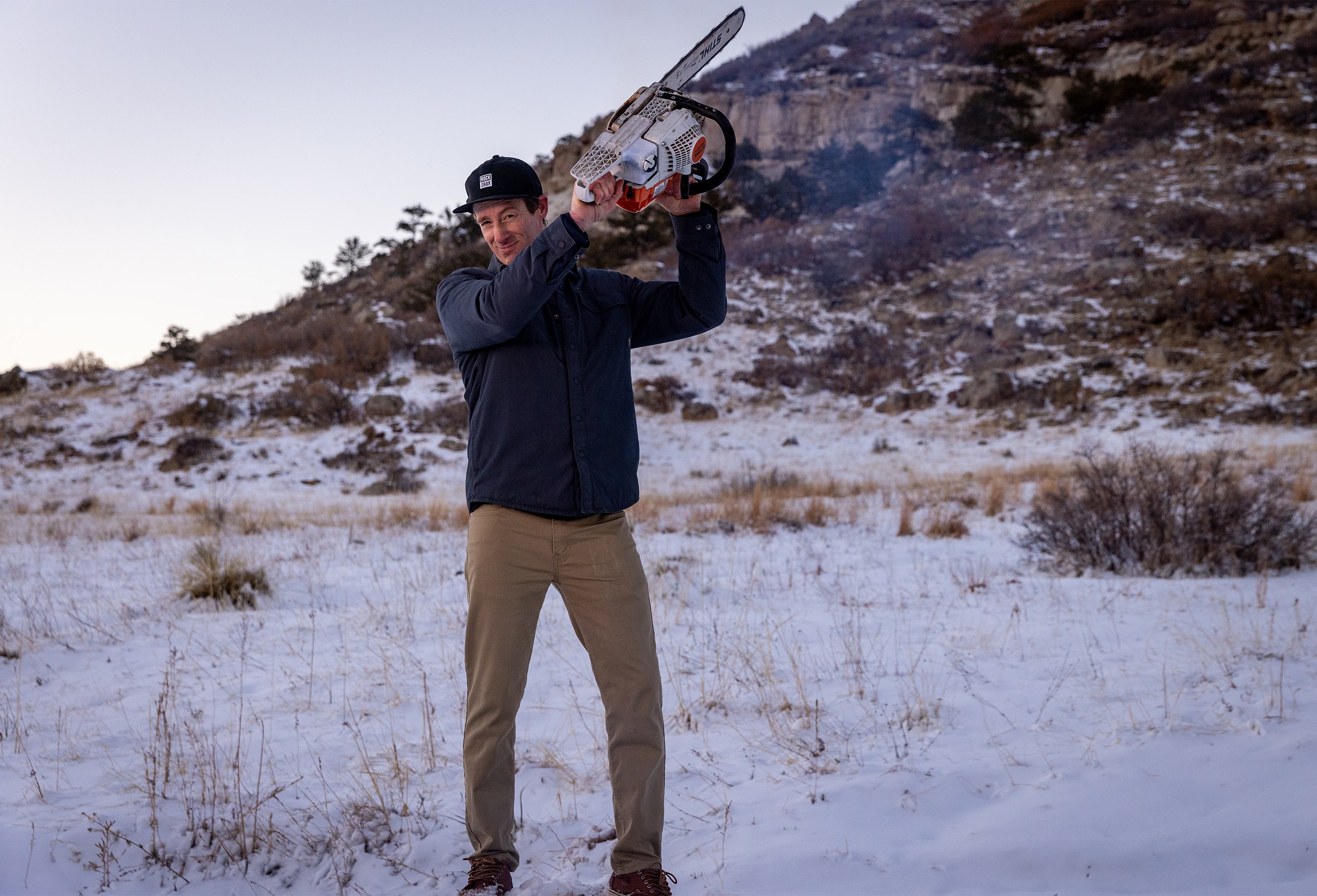
What, exactly, are ButterCups?

Exploded view of ButterCups
ButterCups live on both the damper and air spring shafts of Ultimate-level forks. Inside their gold packaging, ButterCups utilize rubber pucks and a metal plate to absorb frequencies that would otherwise travel up to the rider.
Let’s dive into how they work, starting on the damper side: as your fork encounters any type of obstacle, your lower leg will compress and move upwards. These small, frequent vibrations from trail chatter aren't always big enough to engage the damper, resulting in those vibrations making their way into your hands. That's where ButterCups come to the rescue. ButterCups absorb trail chatter by compressing against the metal plate, which is attached to the damper shaft and sandwiched between the rubber pucks. So, when your wheel encounters trail chatter, the lower leg of the fork will move upwards and compress the lower puck against the metal plate attached to the damper shaft, trapping that momentum. Then, as the lower leg rebounds from the trail chatter frequency, the upper puck is compressed between the metal plate and the top of the ButterCups shell, again absorbing momentum from trail chatter.

Damper side ButterCups in action
Now, let’s move over to the air spring side: ButterCups on the air spring shaft work very similarly, but the spring side is biased to be more effective on the compression stroke versus the rebound. Therefore, the air spring shaft only has one taller rubber puck and utilizes an O-ring when the system extends again.
These little ButterCups add about 4mm of vertical compliance to your suspension and an average of 20% reduction in trail chatter from reaching your hands. All of this happens whenever your bike is in motion.
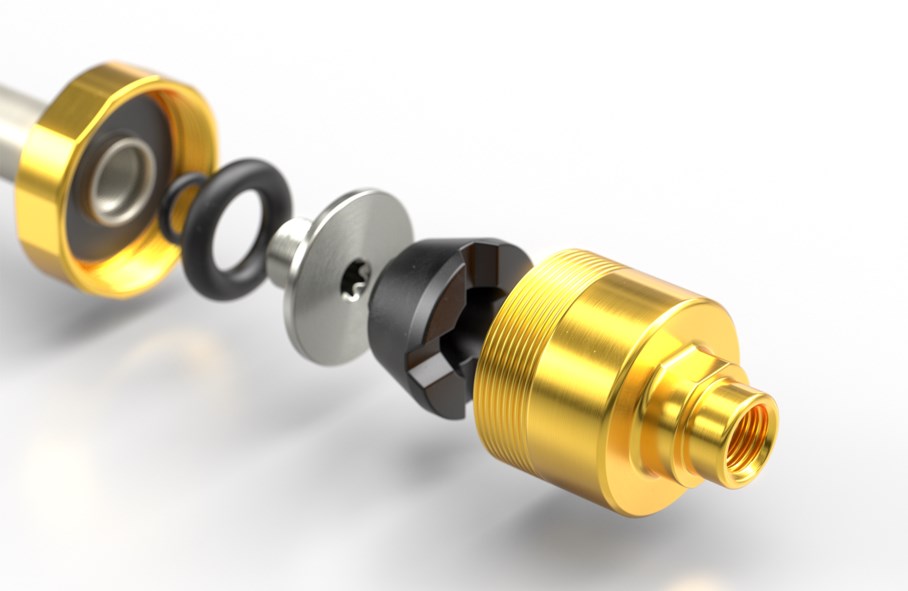
Spring side ButterCups
Our approach was to mute some trail harshness you feel. We found by giving that high frequency, low amplitude chatter responsibility to the ButterCups, it frees up the other parts of the system to do their jobs better.
–Skyler Teachout
Development and Testing
The first time Lynch tried what became ButterCups on his bike, he was pleasantly surprised at how it felt: "The first thing I remember riding was dried mud with a bunch of footprints, and as I was riding across, it was just silent."
The next iteration was tested by an expanded development team using two identically built bikes for A/B testing. Lynch explains, "We would ride over the bumpy thing, trade bikes, ride over the bumpy thing, trade bikes and repeat until we felt confident in our decisions."
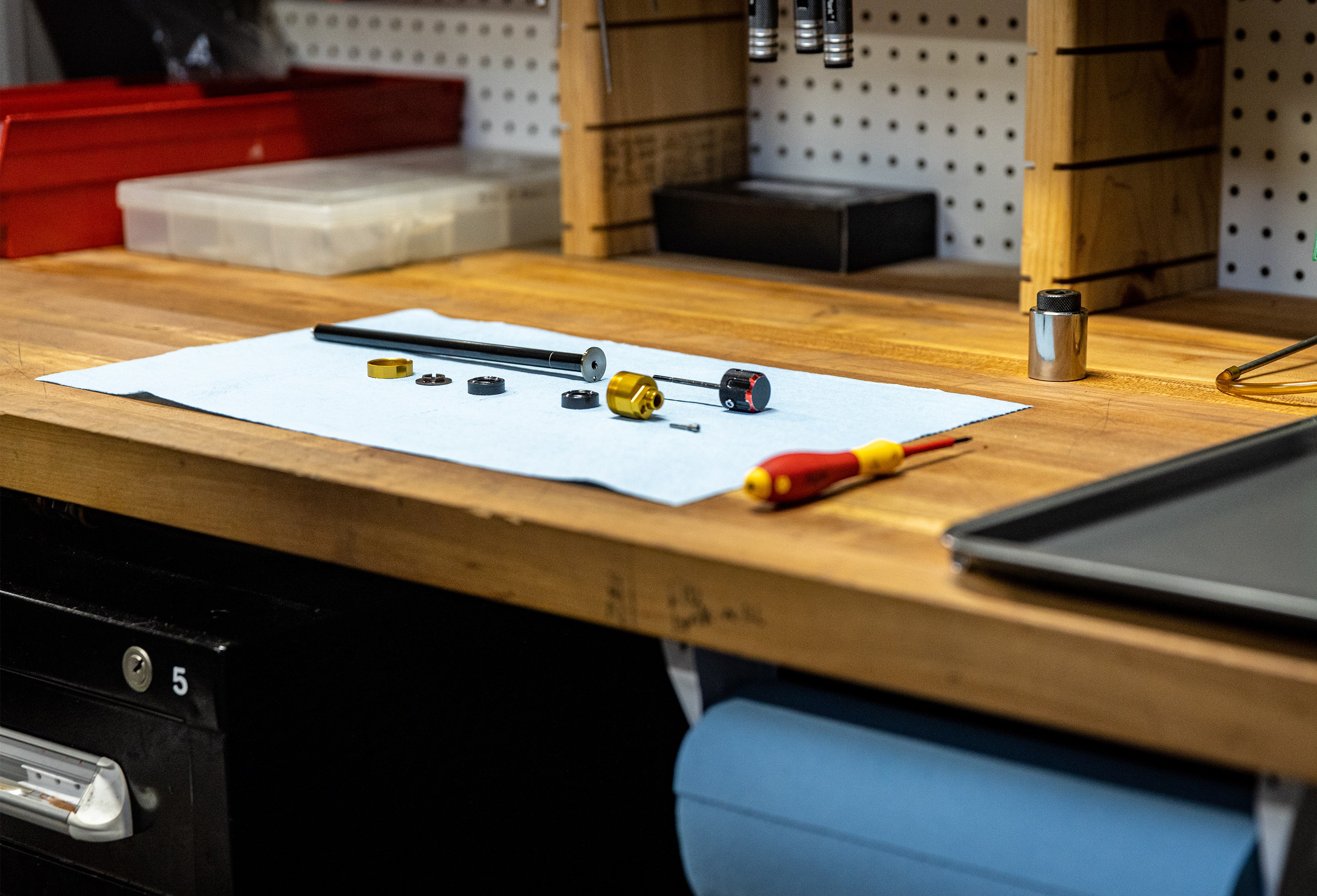
Once they had enough ride experience to confirm that ButterCups provided a tangible benefit to the rider, the team took it to the lab for verification. Senior Test Engineer Brian Hatin creates tests for suspension forks and technologies. Since ButterCups were a brand new development, they started with durability testing. "When we first started out, we had some really soft pucks. We put them on our SIM test machine, which tests for durability, and we started seeing them get chewed up. We have some other tests specific to dampers that represent high speed impacts like a drop to flat or G-out. The newest version of pucks either survived a full set of tests, or they'd get cut. That helped engineers iterate each design, ending with specific shapes, durometers, and materials that we knew would last in the field."
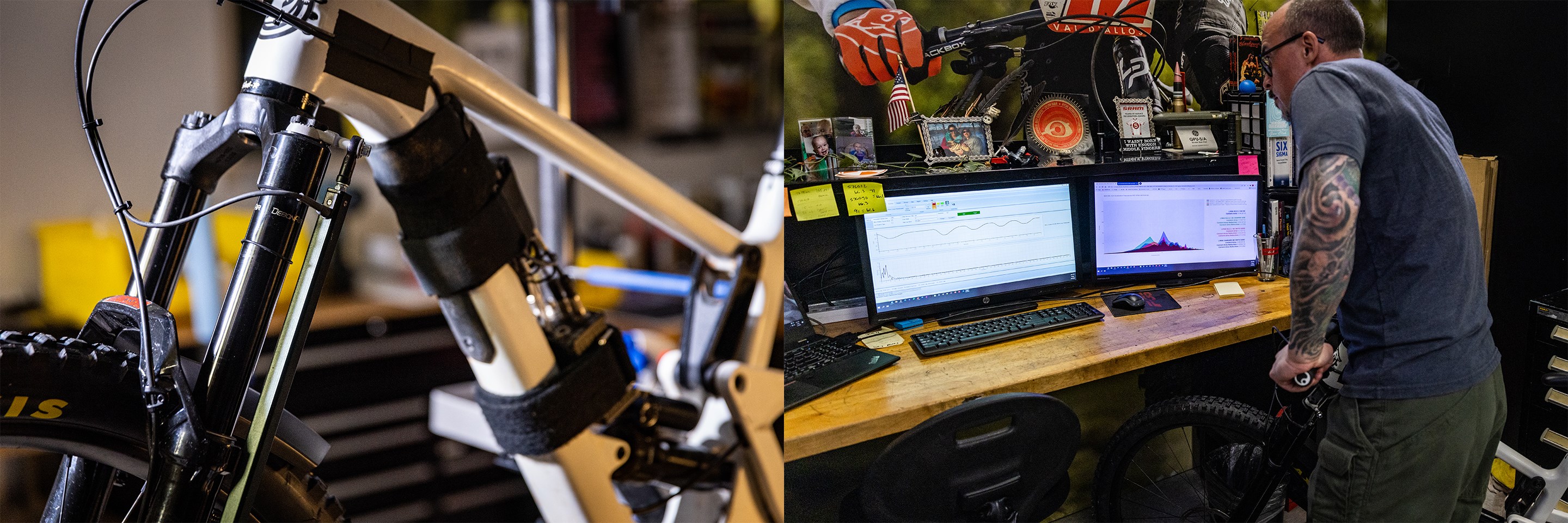
Around the same time, Hatin built a Data Acquisition (DAQ) bike—the ticket to acquiring real-life field data and verifying the impact that ButterCups have on trail chatter. "We're trying to attenuate, or chop off, the peaks of that content for the rider’s benefit. What we were looking for in the data is for less feedback—riders experience less fatigue, less damage, they can hang on, ride faster, have better grip, and better control.”
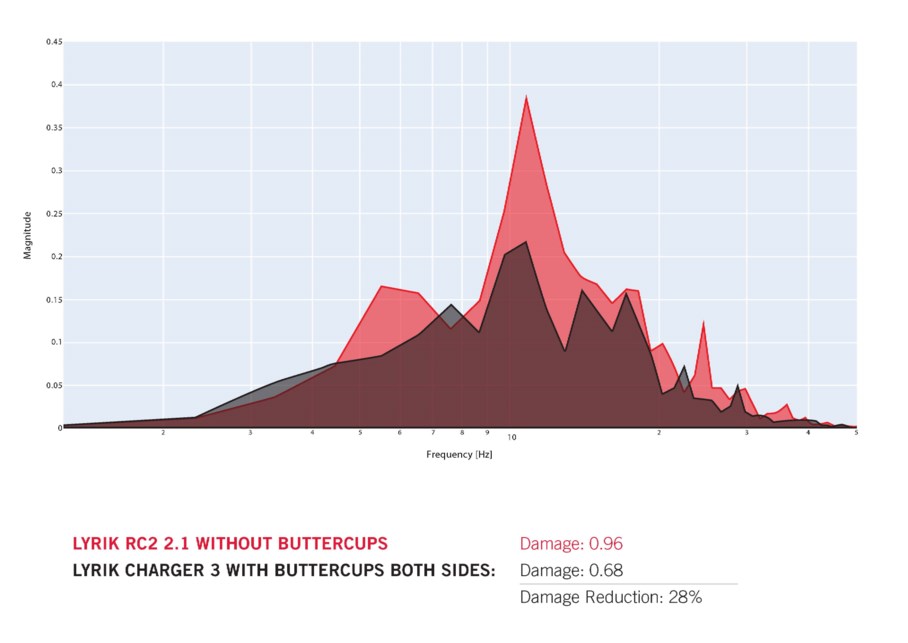
Field test data
With all this data and testing in the rear-view mirror, Senior Design Engineer Eric Neeley was able to fine-tune previous iterations and design the final ButterCups—those little golden cups that live at the bottom of the damper and air spring shafts. “Although we went through three or four iterations once the concept was developed, it didn't really change a ton from the first prototype. It's a neat, simple piece of technology that has a really big impact on how small bumps are transmitted into your hands. That was a really big contributor to the ride comfort we were after and still balance that with good control and handling."
There’s comfort and there’s grip. And when designing ButterCups and measuring their impact on the rider’s experience, our engineers are trying to balance both.
Confidence comes from the stiffness of your fork and how much grip you can sense. You go around the corner and you realize some of that noise isn't coming into your hands. All of a sudden, you're feeling more comfortable, either being safer or going faster, and taking the same amount of risk.
–Tim Lynch
Feel safer and go faster with out the fatigue. That’s why we redesigned the Charger 3 damper and why we created ButterCups. Say yes to an extra lap.
ButterCups can be found in the 2023 RockShox Ultimate collection: Pike Ultimate, Lyrik Ultimate, and ZEB Ultimate. All 2023 RockShox Signature Series forks can add ButterCups by upgrading to the Charger 3 damper and swapping out the DebonAir+ air spring shaft to one with ButterCups. Find your service manual at www.rockshox.com. Questions about fitment? Check out our 2023 Fork Collection FAQ page.
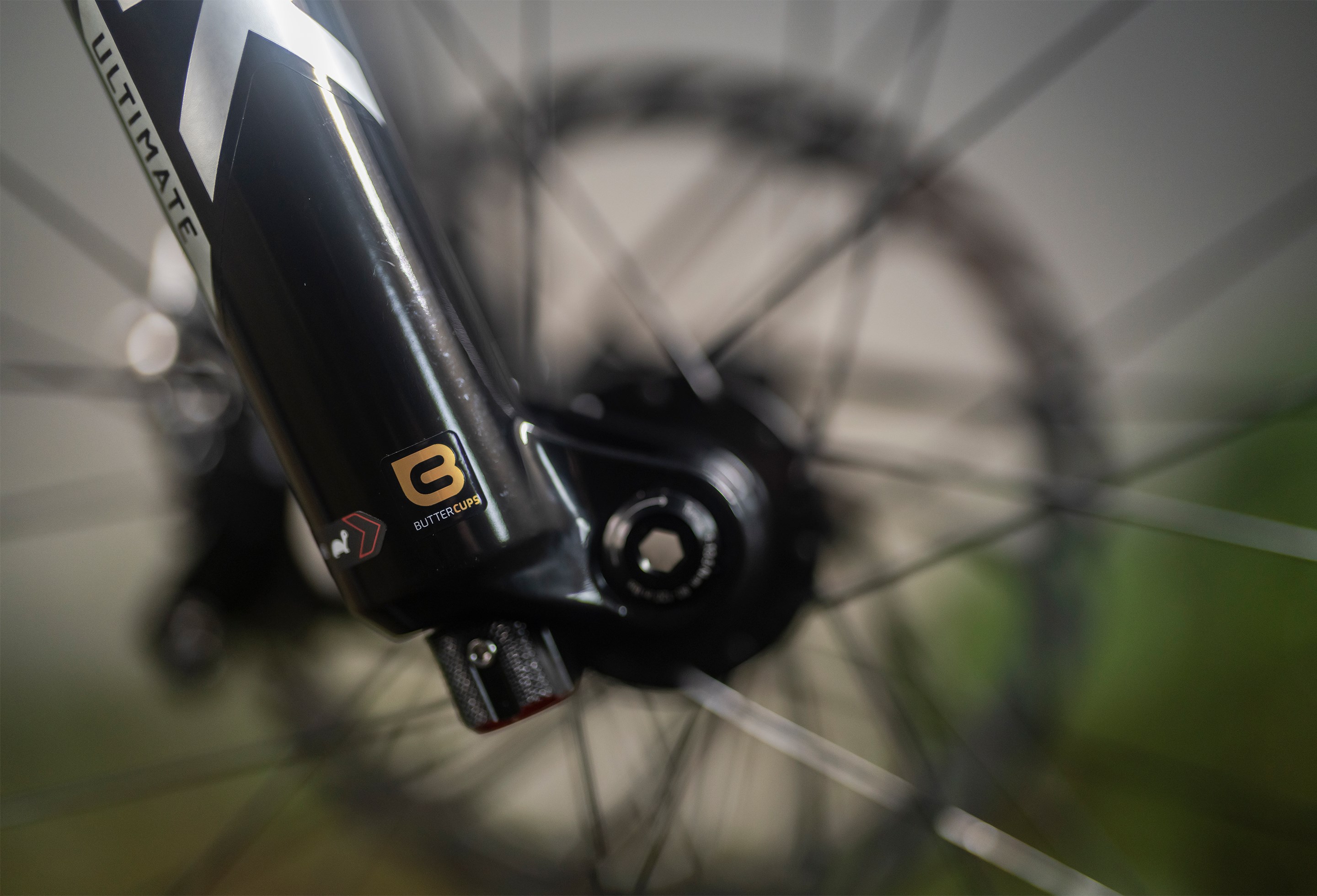
Renderings by Ray Bach. Photos by Mason Mashon and James Stokoe. Words by Sarah Walter.